GEORGE FLOYD AUTONOMOUS ZONE
The sacred grounds where the revolution began is facing off with Minneapolis authorities, who want to remove barricades this week
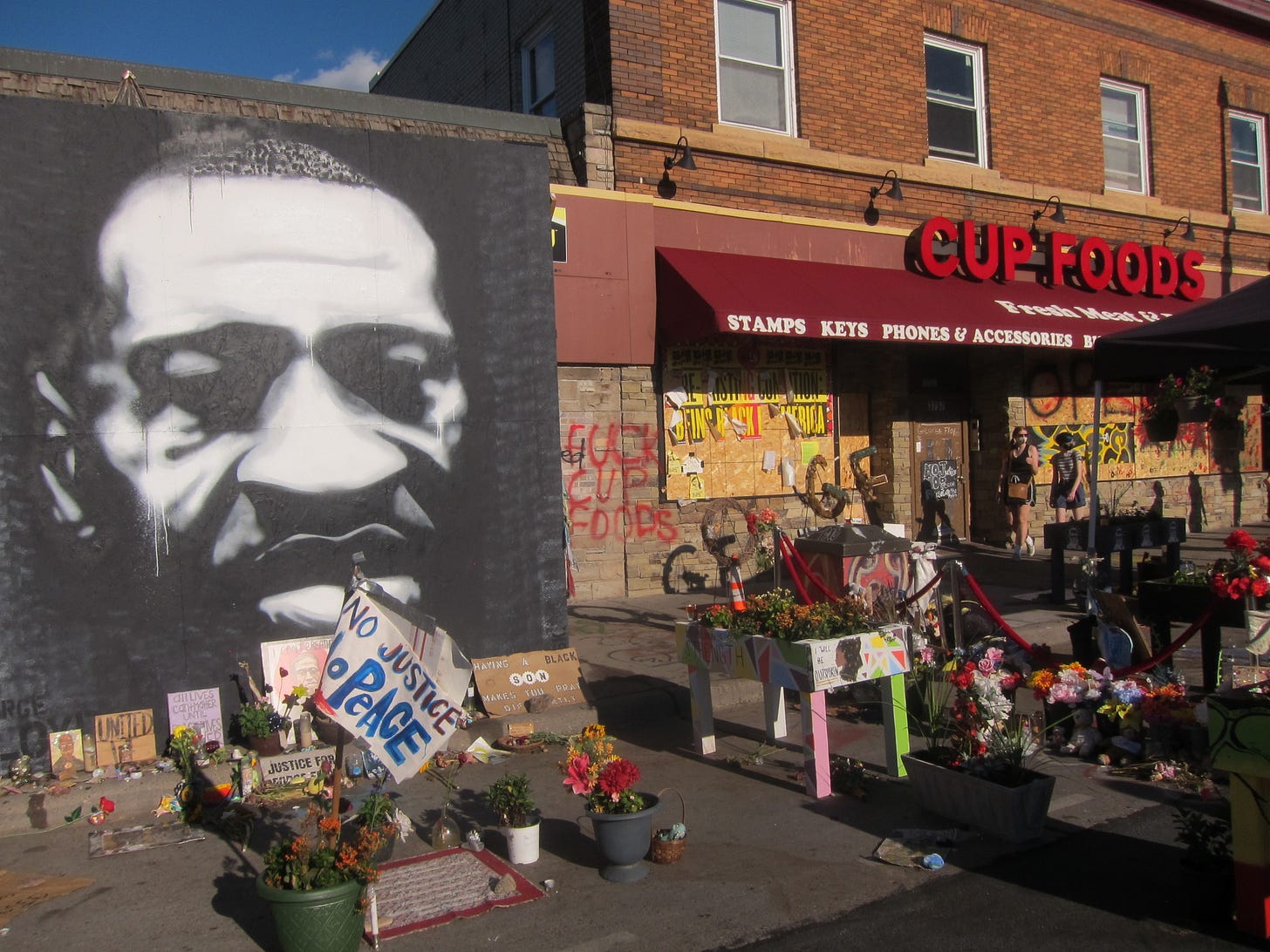
This week I fled the dark druggie vortex of pandemic-era New York City to visit my sister in Minneapolis, where I figured I’d jump into a couple lakes and try to wash off trauma from this surreal summer spent dancing at the front lines of brutal police violence. I thought my reporting tour of temporary autonomous zones had ended earlier this month in Philadelphia, where I visited two homeless encampments that declared themselves cop-free zones, in protest of the city’s deeply-entrenched housing corruption.
(Quick update: both camps narrowly avoided getting shut down by Philly authorities earlier this week, after a last-minute federal lawsuit was filed to stop the eviction. My sources say negotiations are going nowhere, and expect authorities to try to shut shit down again soon.)
But what is that Godfather line that everyone loves to quote? Just when I thought I was out, they pulled me back in. Coming full circle, the last stop of my trip brought me to the place where it all began.
On Monday, sis and I took a leisurely bike ride to the George Floyd memorial on the street corner where he was murdered by police—38th Street and Chicago—which has become one of the most infamous intersections in the world. As we peddled up the street, we suddenly came up to a wall of concrete barricades covered in BLM slogans.
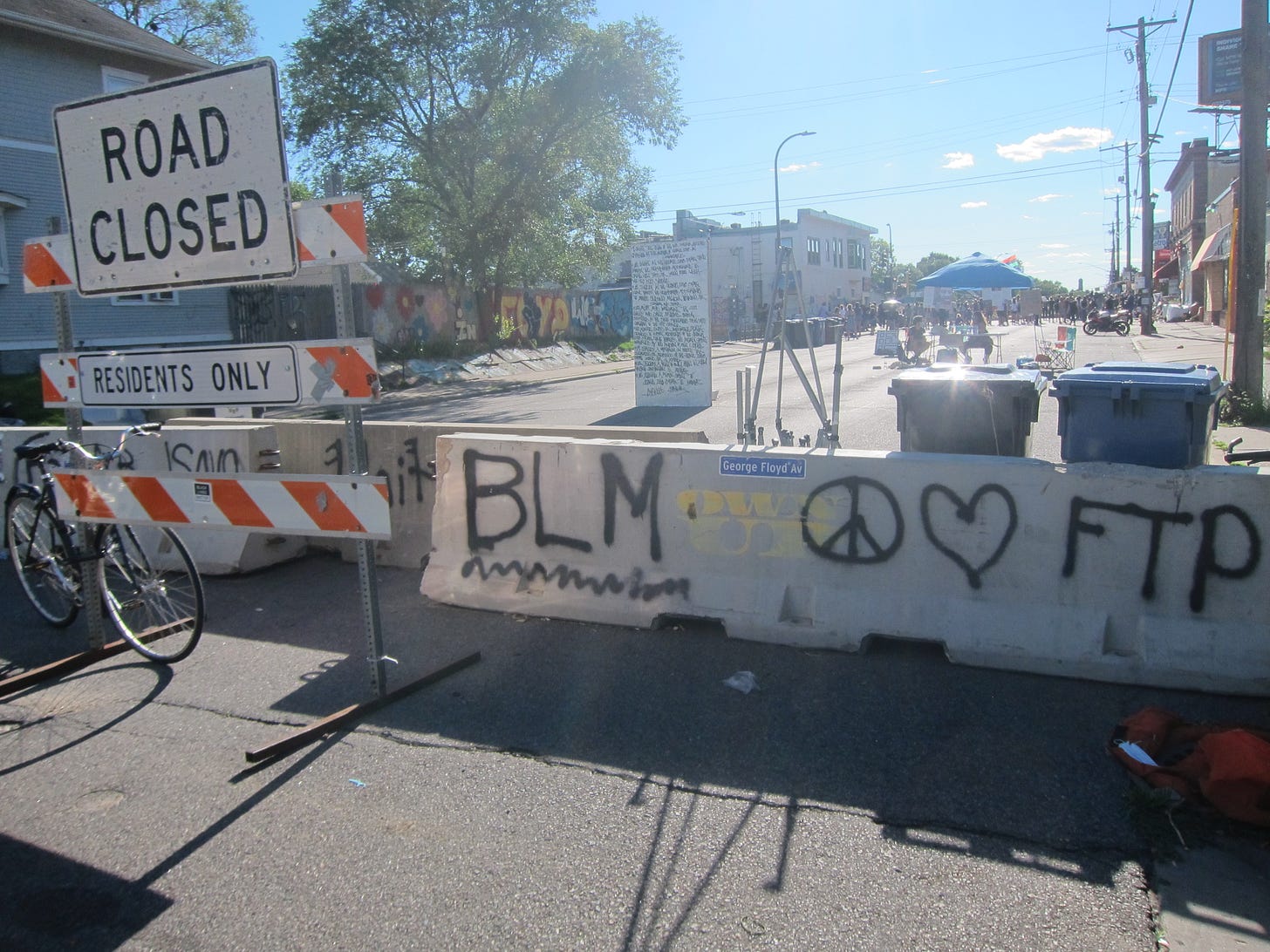
Did I just stumble into another autonomous zone? I thought incredulously. Media reports on other occupied protests never mentioned the Floyd memorial. Protestors in other cities didn’t seem to know about this either. But it made so much sense—of course the street that sparked this political uprising would be the first autonomous zone.
A voice from inside the zone rang out on a megaphone: “REMEMBER YOU’RE STANDING ON SACRED GROUNDS—THIS IS GROUND ZERO OF THE REVOLUTION!”
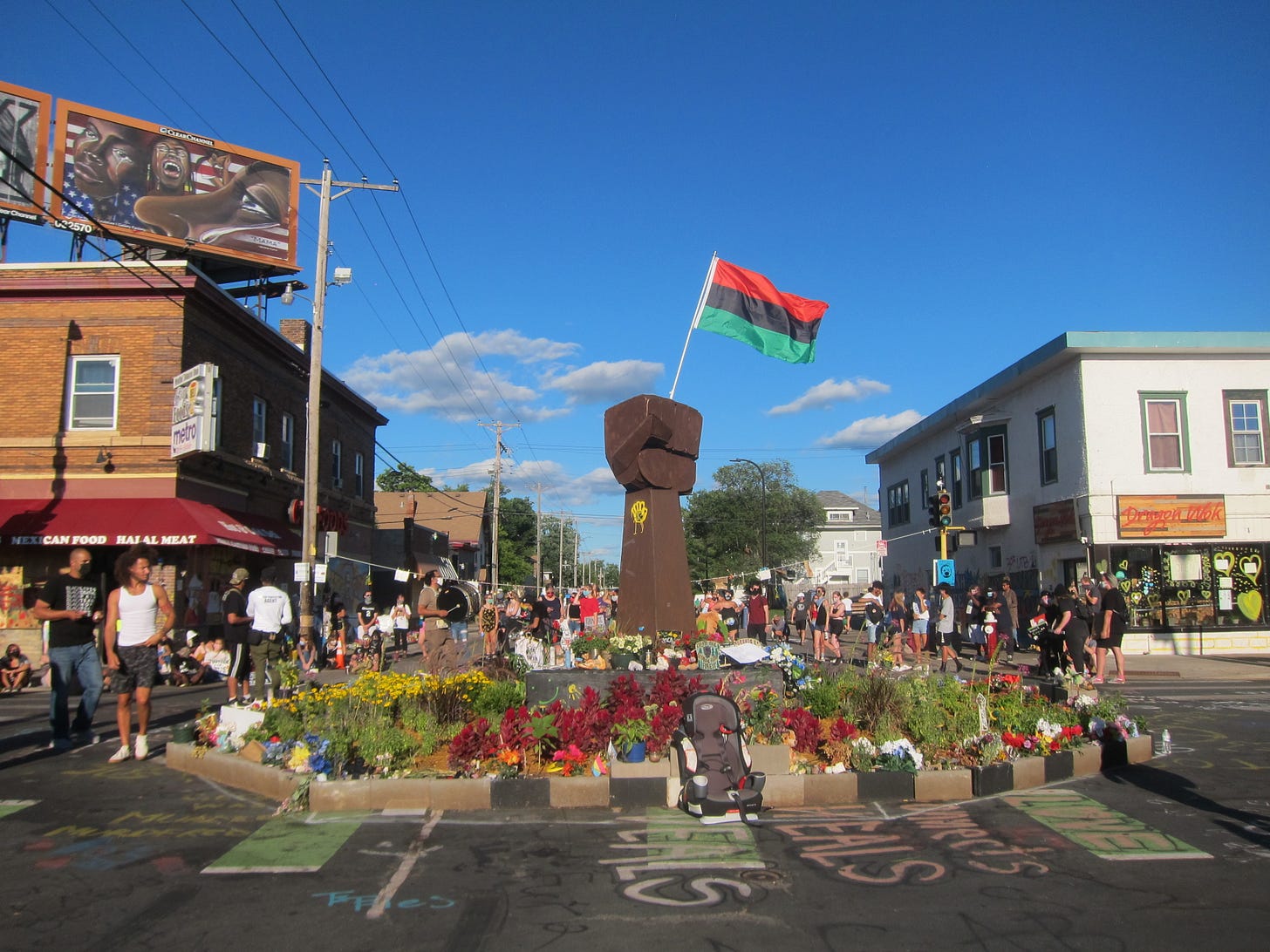
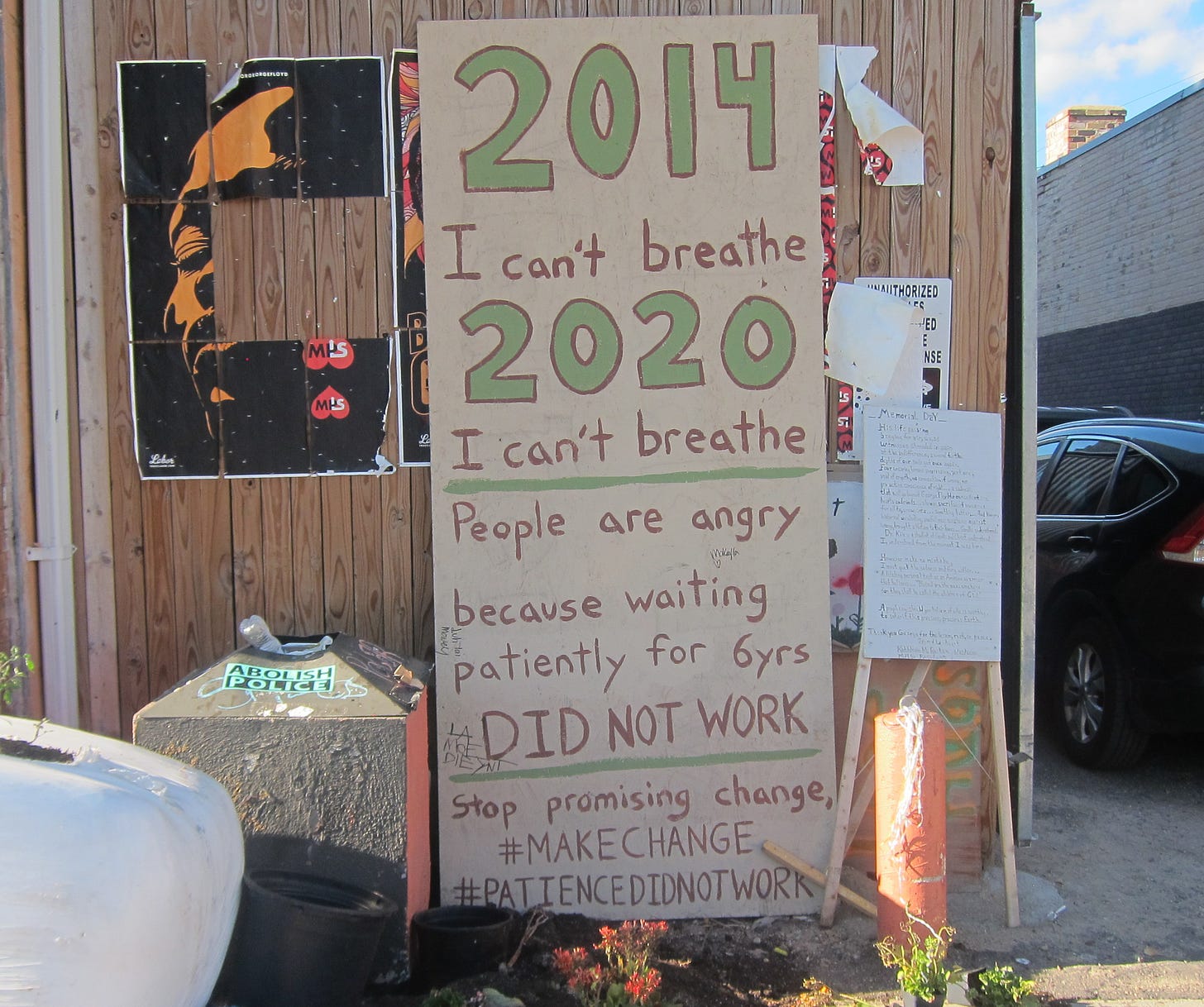
A woman at the volunteer booth confirmed that the “George Floyd Square Zone” has been a no-cop autonomous zone since Floyd’s death on May 28. She also told me that Minneapolis city officials announced they would remove barricades and re-open the streets this week, citing safety concerns.
Later, I found out that the autonomous zone was located in an area plagued by gun violence and was known for turning dicey once the sun set. Several shootings in recent weeks around the zone had resulted in the deaths of both a teenager and pregnant woman.
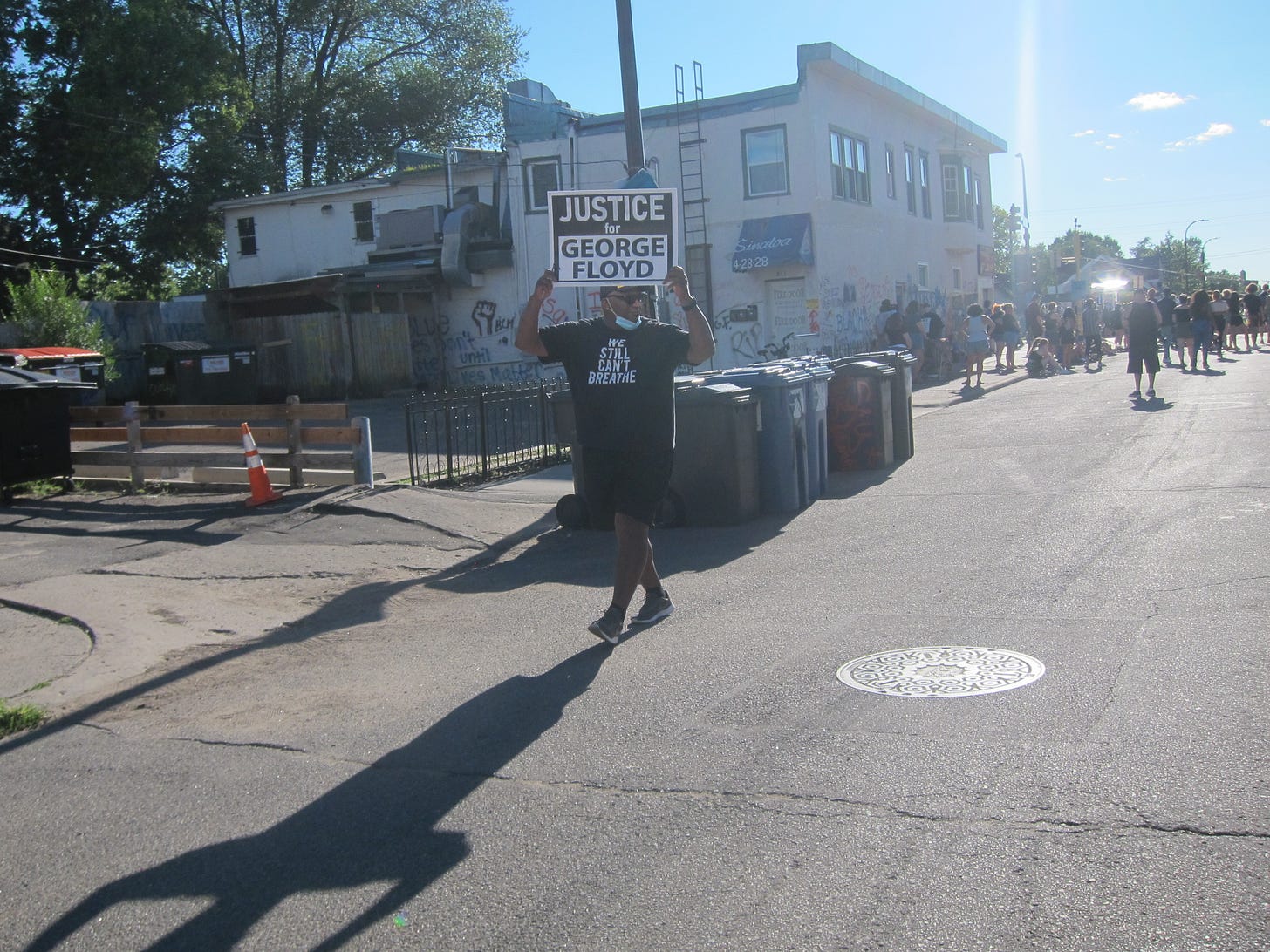
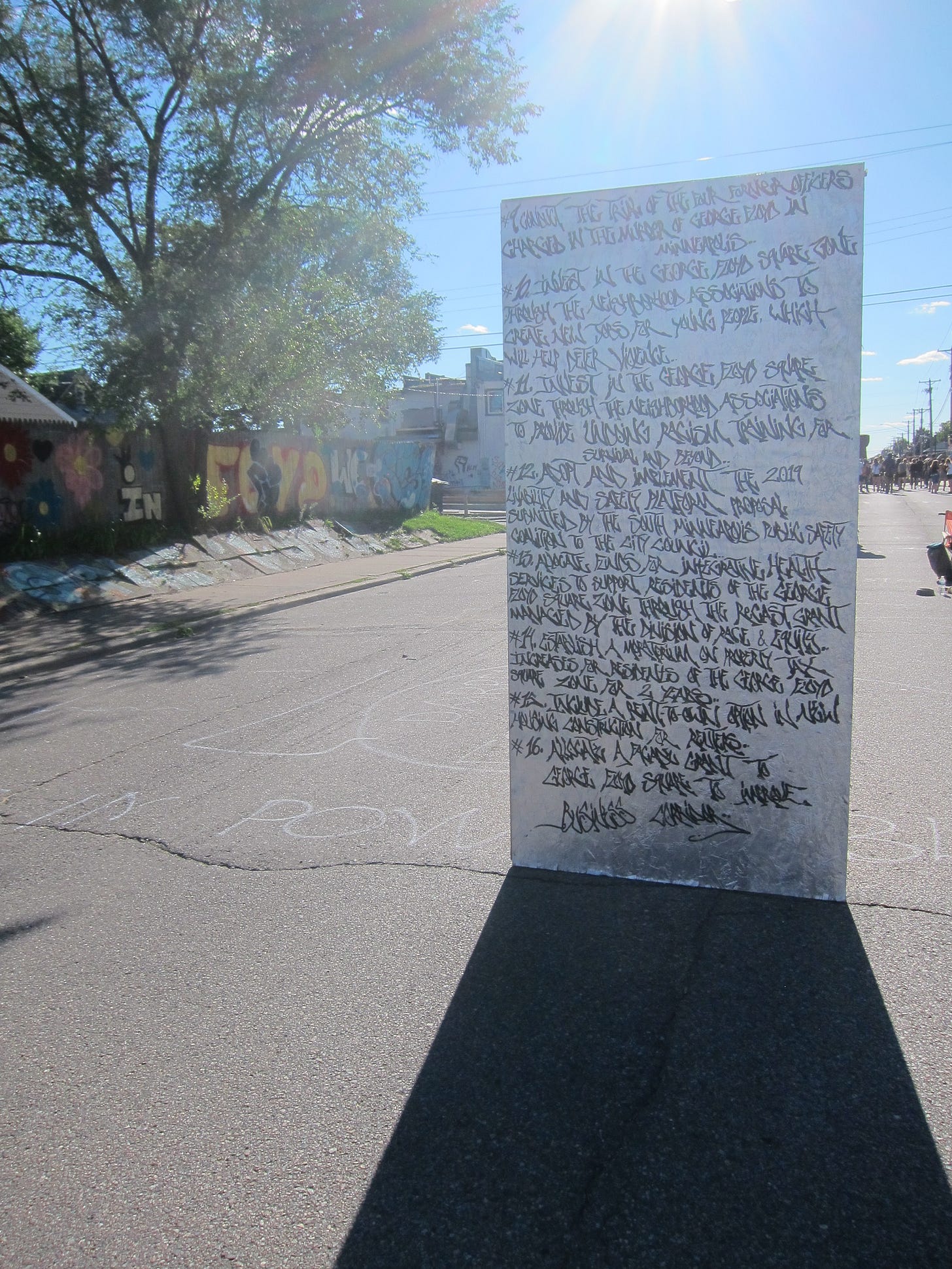
But protestors declared that the zone is a sacred space of mourning, and they won’t leave until their list of 24 demands are met. Those demands, inscribed like hieroglyphics on towering obelisks scattered throughout the square, include:
Holding the trial for the four ex- officers charged in the murder of Floyd
Keeping the zone closed off to traffic until after the trial
Investing $400,000 in a youth jobs program
Firing several top officials, including Hennepin County Attorney Mike Freeman, whose office is overseeing the Floyd investigation
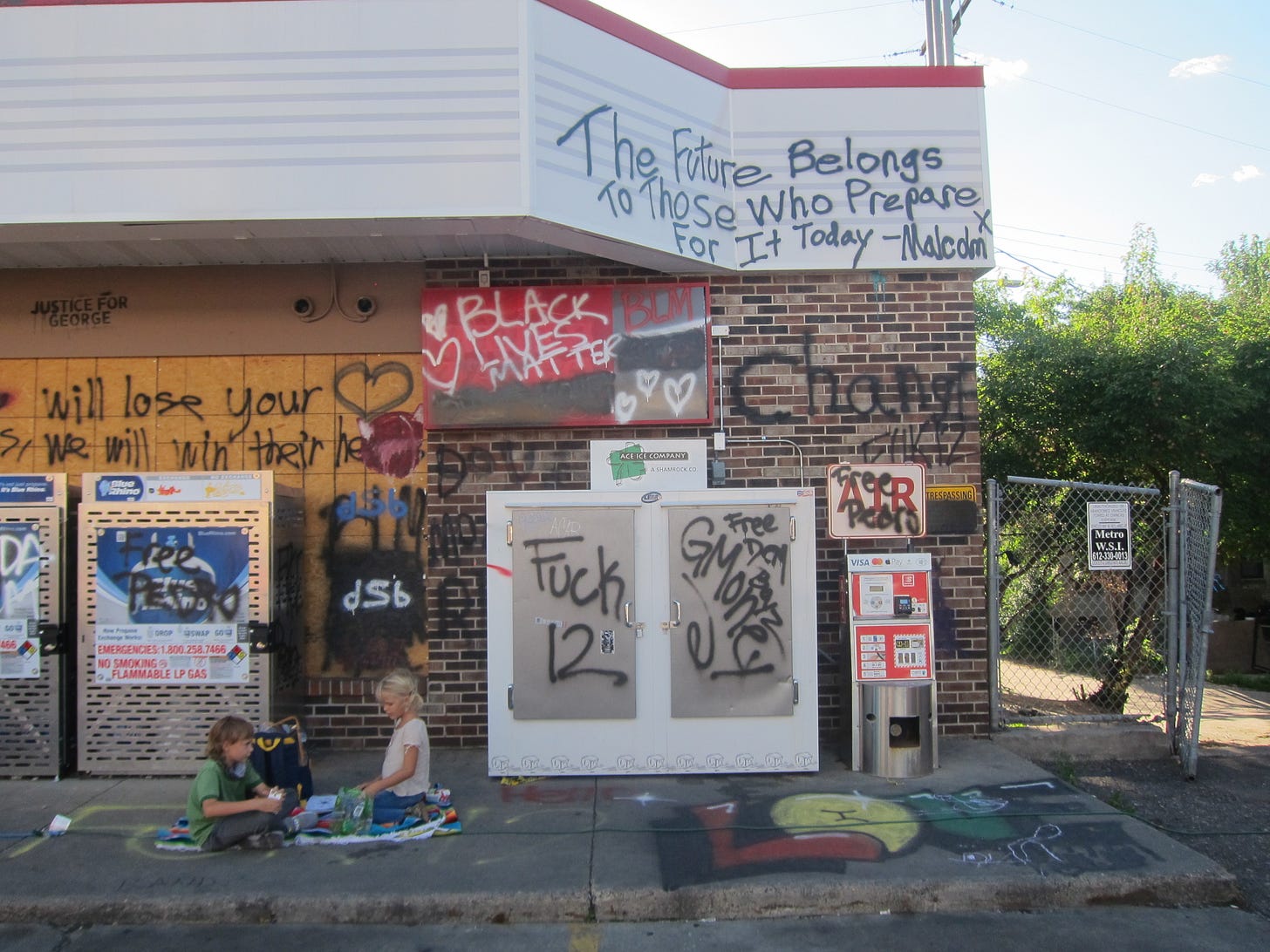
Rave New World is an independent newsletter fueled by readers’ paid subscriptions. If you think this gonzo journalism project is worth supporting, please consider subscribing to a paid tier!
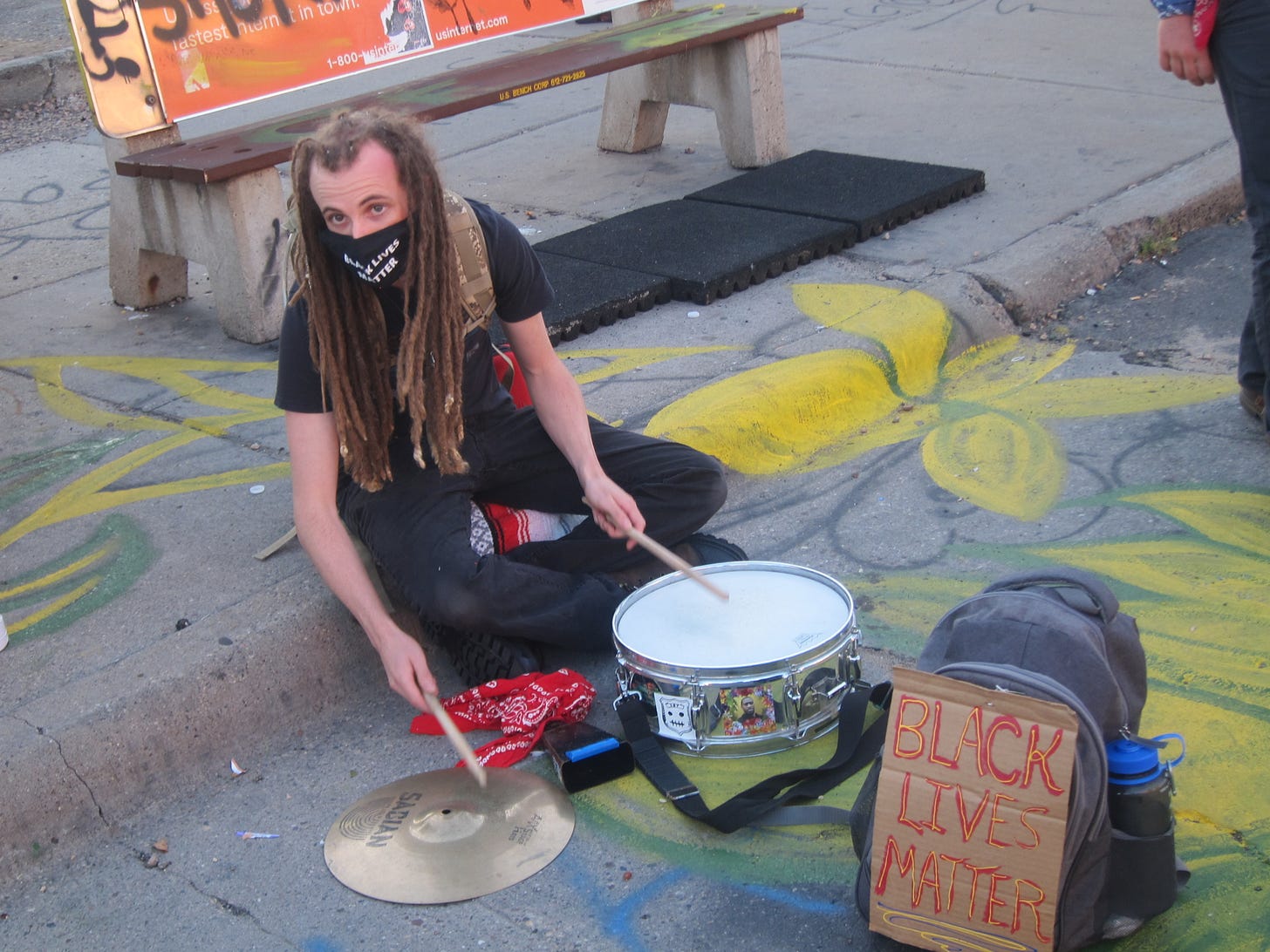
I ventured deeper into the space, past a dystopian deserted gas station, and dreadlocked hippies playing bongo drums in Black Lives Matter masks. The area was devoid of tents, homeless encampments, tables of free food, and other features I was used to seeing at autonomous zones. Instead, camera-toting tourists from all over the world wandered around snapping photos, and a sense of mourning gave the zone a solemn gravity that I haven’t felt as much elsewhere.
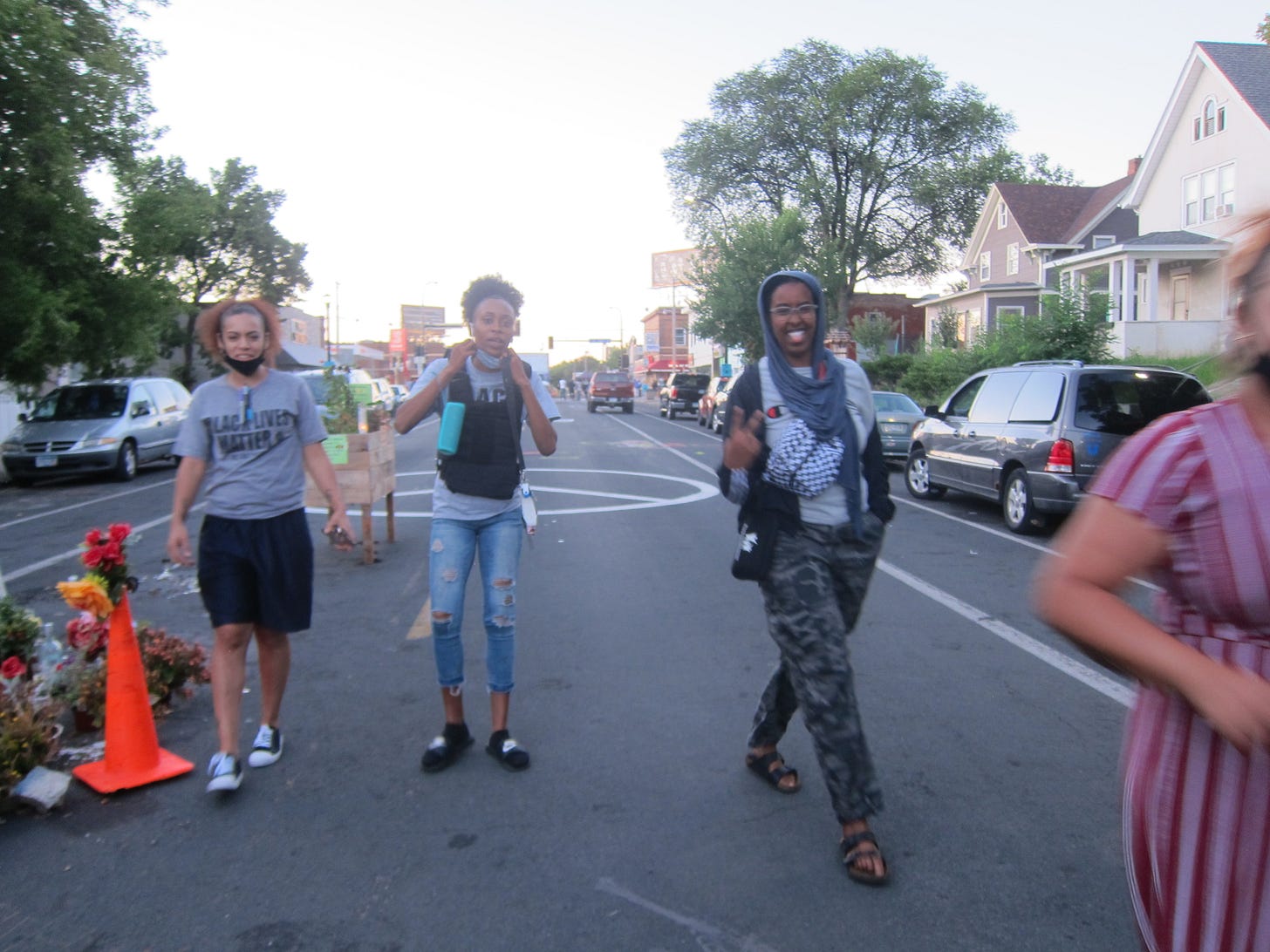
Another notable difference: this autonomous zone is primarily run by young Black women, who walk around in protective vests, carrying walkie talkies. One leader named Mileesha explained how the George Floyd Memorial Zone came to be: “The system forced our hand. It wasn’t nobody’s plan to do this, it was a reaction to something out of our control,” she said. Mileesha emphasized that protestors weren’t going to let the city remove barricades and open the streets back up so that life could go back to normal—because the status-quo wasn’t OK.
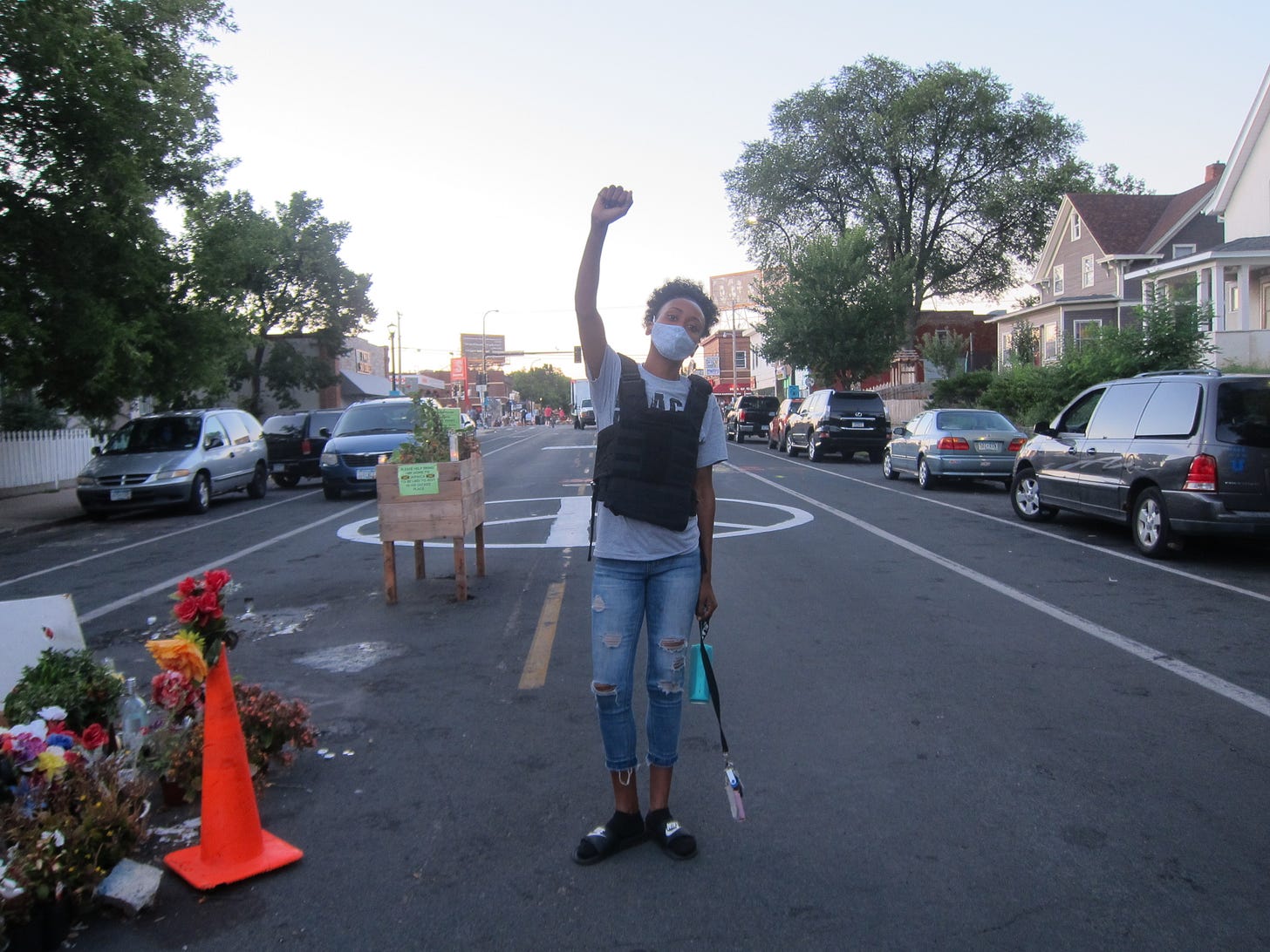
“Floyd’s death was a rude awakening that we are still in slavery, and if we need justice, we need to stand our ground,” she said. “This lynching woke everyone up, and standing our ground is how we make sure this doesn’t get swept under the rug.”
Other organizers echoed this sentiment. “A community standing together in civil disobedience can bring change,” said one leader, at a meeting later that day. “When they see what COVID has done, people will see this space not as a public nuisance, but a public service.”
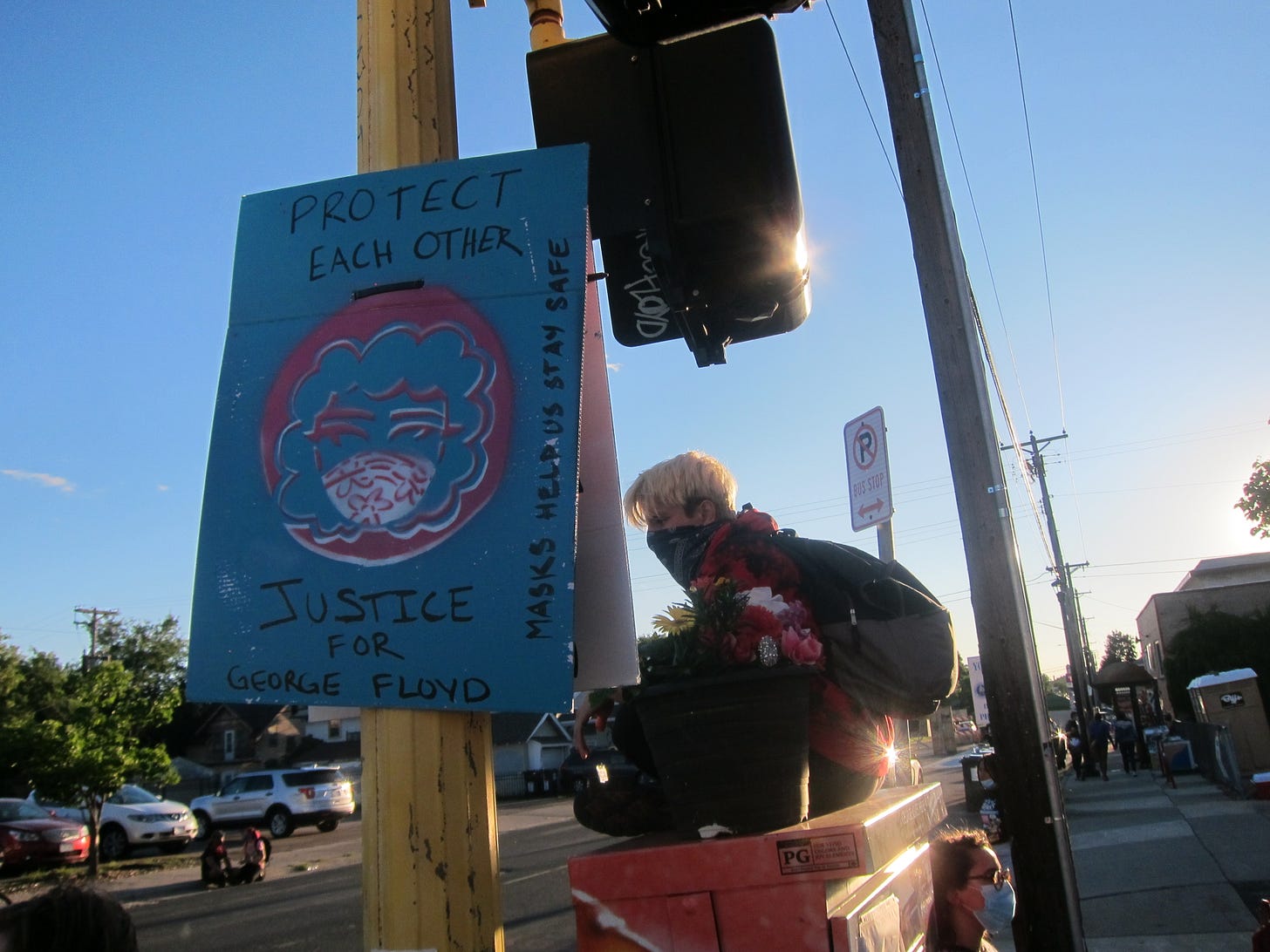
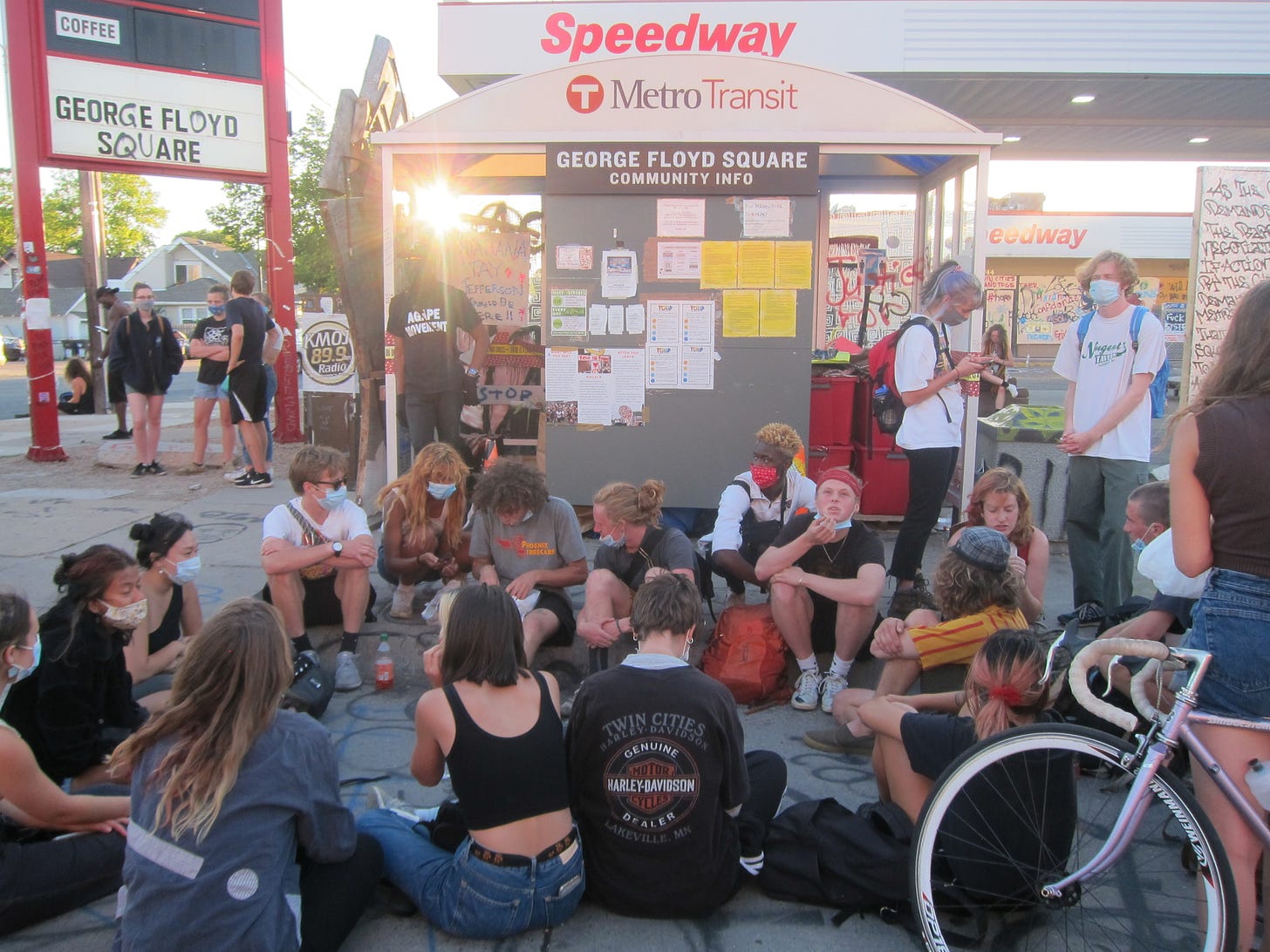
That afternoon, a rally to oppose the city re-opening the streets was being held in the autonomous zone, with a hundred or so protestors clustered around a Black Power fist that acted as the square’s centerpiece . A DJ inside a truck stacked with speakers blasted protest anthems like YG’s “Fuck Donald Trump" between speeches and spoken word poetry. Then a man took the mic and led the crowd in a chant: “Fuck Cup Foods!” he said, referring to the grocery store that called the cops on Floyd—which stood a few feet away, still open for business. “FUCK CUP FOODS!” the crowd shouted back.

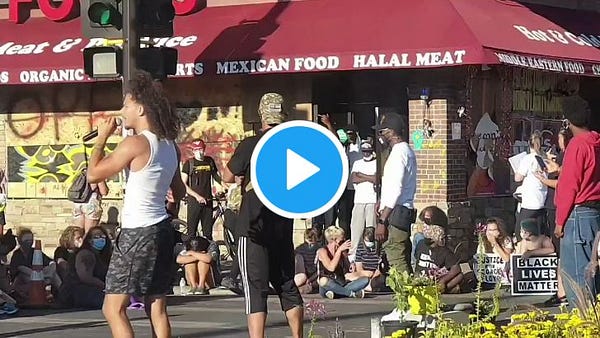
A man dressed in all-black emerged from Cup Foods and flipped everyone off, and suddenly there is an explosion of commotion—a flurry of shoves and shouts and people running in different directions as a fight breaks out between Cup Foods employees and protestors. Organizers try to quell the chaos by calling for a moment of silence, but the crowd is too agitated.
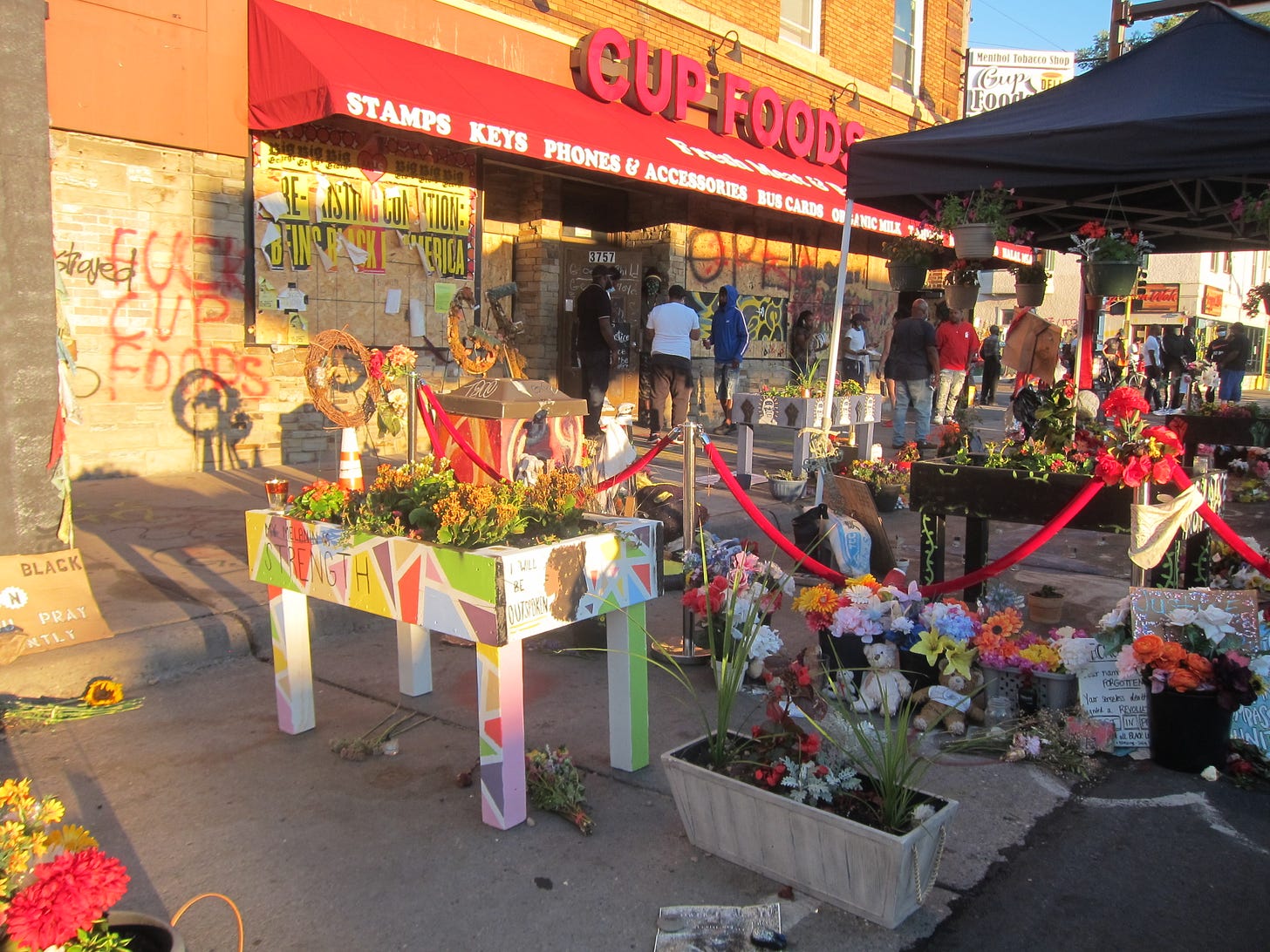
I walked up to the store to record some footage. “Be careful, you can get shot for doing that,” a man behind me warned, explaining that Cup Foods hired security from the Bloods gang to protect it—which may be one of the reasons why it hasn’t been torched for calling the cops on Floyd.
“You know what’s going on here, right?” said another young woman who appeared by my side. “The Cup Foods owner is a sex trafficker, with a fake mosque in the basement where he has been molesting underage girls.” I looked at her in shock. “It’s true—” she continued, showing me photos on her phone of the Cup Foods owner Mahmoud Abumayyaleh’s criminal sex offender record. “My friend and I have been standing outside, telling customers not to go in. But he’s hired these thugs as security and they’ve made violent threats to my friend. Now I’m scared for my life.” She gave me her number and retreated back to her car.
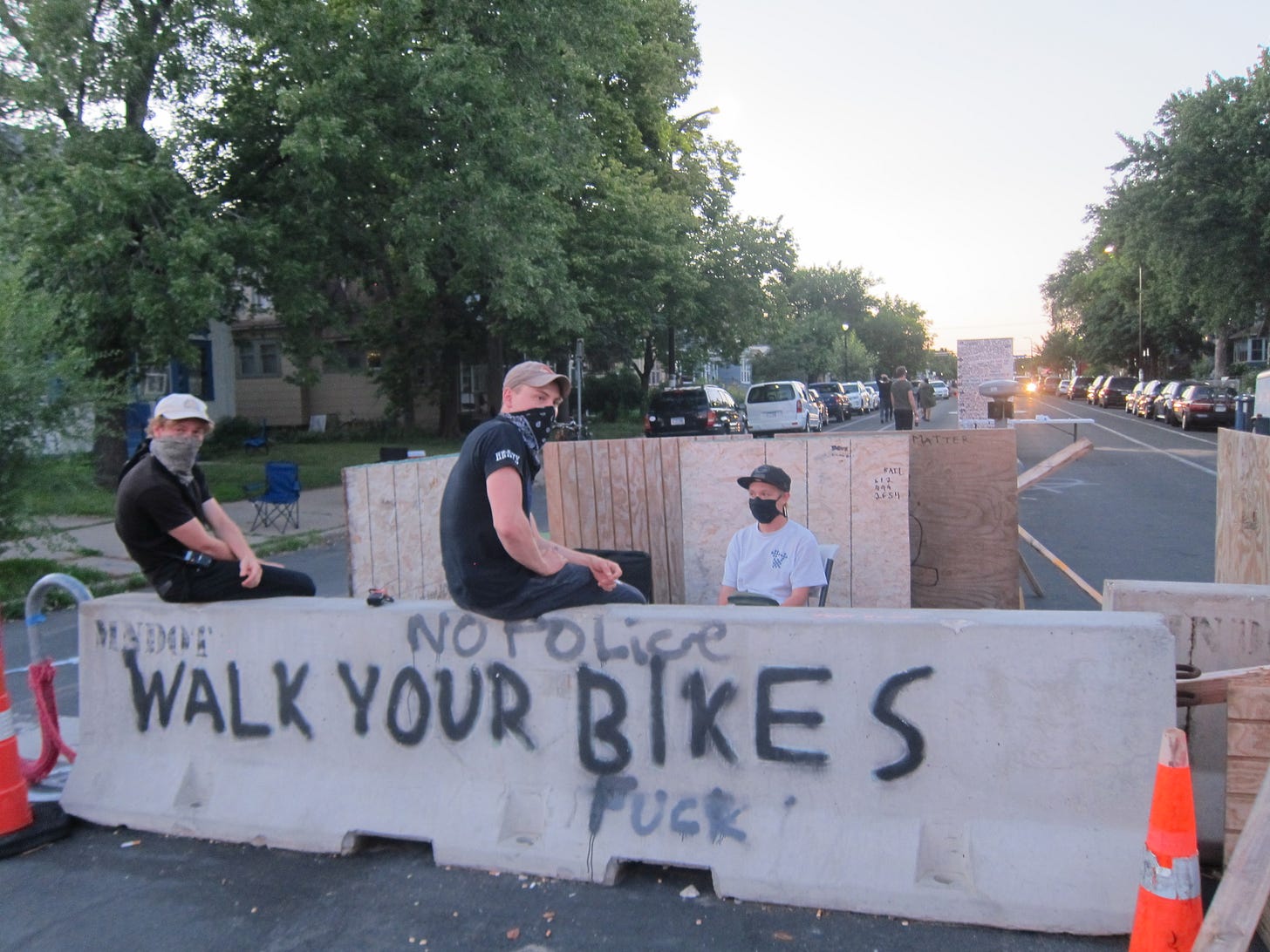
With the light fading, I also decided to head out, exiting the zone past another barricade guarded by a coterie of white boys who looked young enough to still be in school. “Are you armed?” I asked. They nodded, telling me that they had faced recent attacks from right-wingers who’d fired bullets from passing cars into the zone.
“You never know what’s coming,” said one of them, “So we’re gonna be here all day and night.” I nodded and hopped back on my bike, waving goodbye, knowing that the fickle finger of fate would determine when this autonomous zone will come to an end—and that I would be back again soon.

Thank you for this fresh postcard. It was wonderful to read! <3